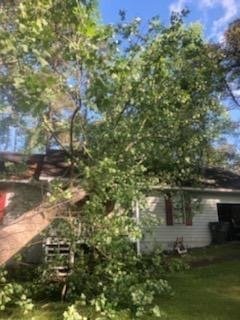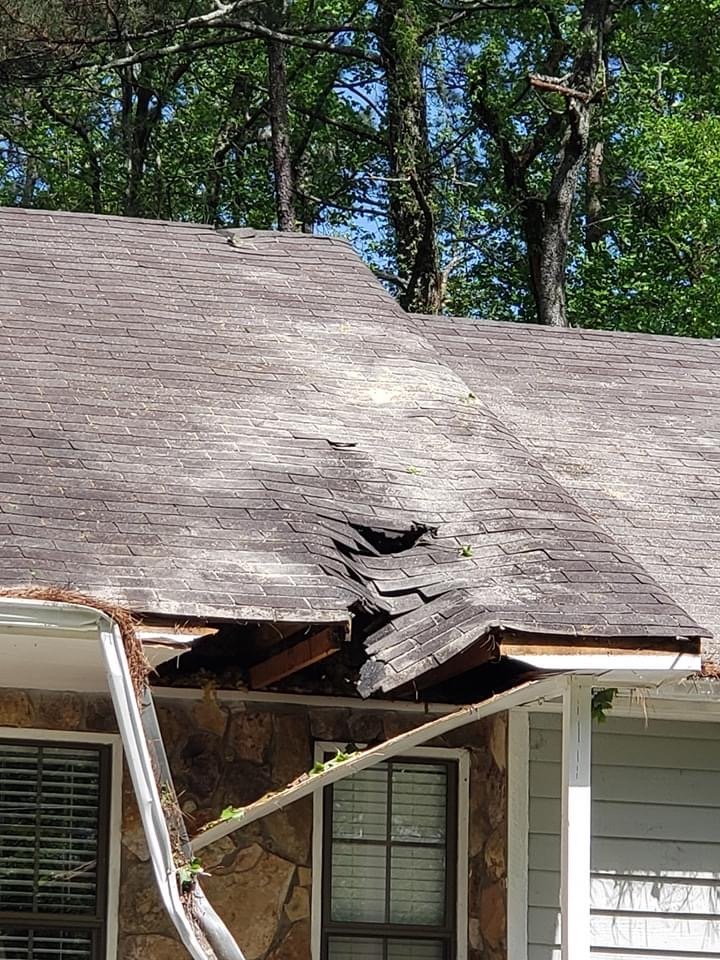A tree risk assessment is important before the spring storms
Tree risk assessment is often done in the springtime as a process to evaluate if a tree is likely to fail during a storm or in high winds and possibly cause damage to property or injury to people. This assessment should be done before the springtime rain and storms to prevent problems that could be devastating to the home owner’s property.
Tree assessments are done by arborists who are experts in the field and possess a strong knowledge and skill set, not only to assess if a tree will fail, but also to decide what preventative measures should be taken. A tree assessment helps reduce the chances of trees breaking or uprooting in high winds that can potentially cause property damage, injuries, or even death. Thus, if you live in a state like Georgia, it is crucial to complete the assessment in the springtime since brutal storms with high winds will occur between now, and during the coming months that could be devastating due to trees breaking or uprooting and falling.

What Do Arborists Look For During a Tree Risk Assessment?
One way to find out if a tree will have the ability to sustain a storm event is by figuring out its structural capacity. To do this, arborists consider many factors when assessing a tree including:
- species of the tree
- the tree’s growth habit
- any defects the tree may have
- the quality of branch attachments
- condition of the trees root system
- how the tree leans
- the history of both the tree and the site it stands on
What Causes a Tree to Fail?
What makes a tree fail is when the load it experiences exceeds its structural capacity. Of course, Georgia’s environment will also play a big part in whether or not a tree will fall. Trees may fail from being submerged in water or for other reasons, which is what arborists consider when they conduct tree risk assessments. There are still more factors that need to be taken into account such as soil and slope. A mature tree is typically large, and the bigger the tree, the more the risk of damage and injury increases.
Why Only a Trained Arborist Should Assess Trees?
The things mentioned above are just a fraction of what arborists do during a tree health assessment. These professionals are the only ones qualified to access trees and then advise clients of the many measures that can be taken to reduce risks. Arborists will provide clients with a complete picture that includes the following:
- where failure is likely to occur
- what conditions will cause failure
- costs to take preventative measures
- benefits of reducing risks
- management strategies
It takes a trained eye to be able to identify the differences between a minor defect that is simple to fix and significant weaknesses of a tree that may require removal. Structural defects that can lead to tree failure aren’t always visible, especially those in the tree or beneath the ground, and the forces of nature that the tree may have to stand against are unpredictable in Georgia.

What Should a Good Arborist Look for When Assessing a Tree?
While there are many good arborists available, not all services will provide all the required checks when assessing a tree. Fortunately, our reliable arborists at E-Z Out Tree Service know the importance of assessing trees properly. Our arborists leave no stone unturned and complete every aspect of the inspection to ensure the predicted outcome is accurate so that our clients won’t have to pay a bundle of money to rectify a situation. The following are just some of the many things we here at E-Z Out Tree Service looks for and examines during our tree assessment:
- dieback
- gaps
- conks
- cavities
- wounds
- discoloration in the crown
- hollow places
- how the tree leans
- branches that extend beyond the crown
- the trunk taper
- the tree trunk for wounds, cracks, decay, and sloughing bark
- the root collar and the root zone
- tree decay since it can reduce the strength of a tree and it’s usually a sign of disease
Trees with codominant stems (2 or more stems that emerge from the same area) may split apart at the attachment. While diseased trees typically have visible signs, there are some trees with diseases that may not show any signs whatsoever, which our arborists at E-Z Out Tree also take into account. It is equally important for arborists to know the basic types of fungi decay, which are white rot, brown rot, soft rot, and sap rot. Moreover, the presence of certain insects can indicate decay as well. Carpenter ants are usually associated with decayed wood within the tree and Pine beetles can kill pine trees over time and spread to neighboring trees.
Conclusion
It is critical to have your trees inspected on a regular basis, especially in the spring, to prevent tree failure during storms that can injure your family, neighbors, or innocent people passing by or potentially cause damage to yours or your neighbors’ structures. Many tree-related accidents leading to costly repairs or accidental death, could have been avoided by taking preventative measures. Now is the time to call E-Z Out Tree Services at 770.822.9843 for your personalized tree risk assessment.?
